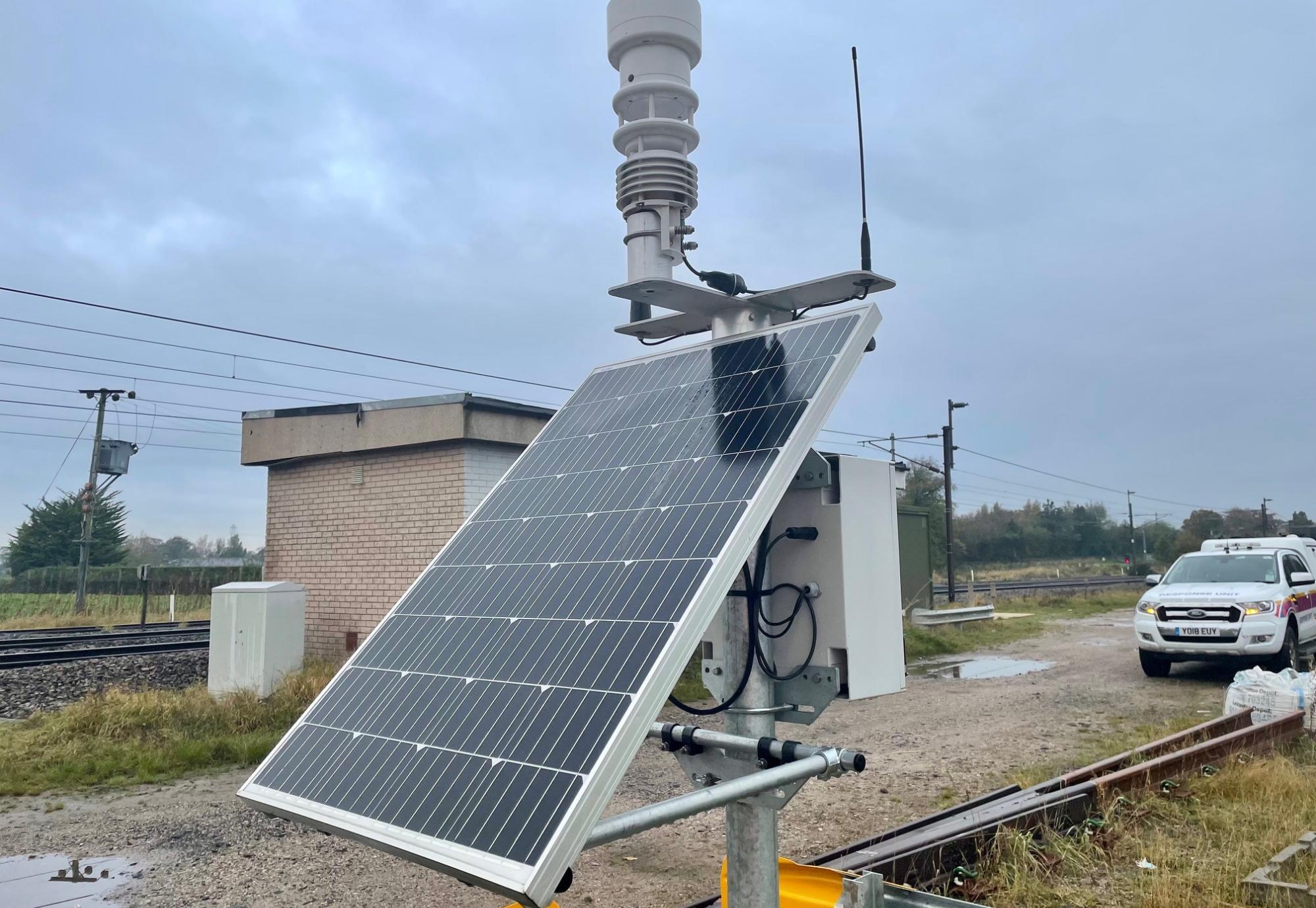Network Rail has installed 60 new sustainably powered weather stations to monitor the country’s railways from London Euston to Carlisle. The product of choice is a Lufft WS601, that provides comprehensive measurements of relevant weather information including precipitation.
Weather watchers have been installed along the West Coast main line and across parts of the North West.
Network Rail has installed the weather watchers to ensure engineers can act swiftly before extreme weather events ensuring passengers and freight continue to move rapidly. The £1.3m investment gives staff and response teams access to real-time data allowing any issues to be fixed quickly.
Comprehensive weather monitoring with Lufft WS601
The scientific surveillance stations measure:
- Wind gust & direction
- Air temperature
- Dew point
- Relative humidity
- Wind speed & direction
- Rain fall totals (precipitation rate & accumulation)
Network Rail emphasised how the new technology will help Network Rail reduce disturbance from extreme weather events. Talisa Fletcher, Network Rail Service Delivery Manager said: “Our solar powered weather stations will help us to better understand weather patterns. During stormy weather we can send our response teams to where they’re most needed which will help us to reduce disruption and keep passengers safe.”
Extreme weather has caused more than 400 days worth of delays in Network Rail’s North West and Central Region since 2015.
First summer in operation revealed rail temperatures above 50 °C
However, the system’s benefits are not limited to stormy weather with strong winds or rains. During its first summer in operation, the monitoring system revealed rail temperatures of 50 °C and more. Based on the atmospheric measurements conducted by the Lufft weather sensors, the rails tend to hover around 20 degrees above the surrounding air temperature, Quadrant Transport reports. This can cause the steel rails to expand beyond the planned limits, leading to rail buckling and, ultimately, to a traffic breakdown.
In the long term, the data that is gathered will support Network Rail weather experts to predict which parts of the network are more vulnerable to bad weather before it even hits.
Railway traffic is susceptible to weather in many regards, be it storms, heavy rain, or ongoing heat. Smart and easy-to-integrate monitoring systems can support railroad network operators in their important work. Reach out to our experts and find out which solution would fit your purpose best.
This post is based on an article originally published in Rail Technology Magazine



